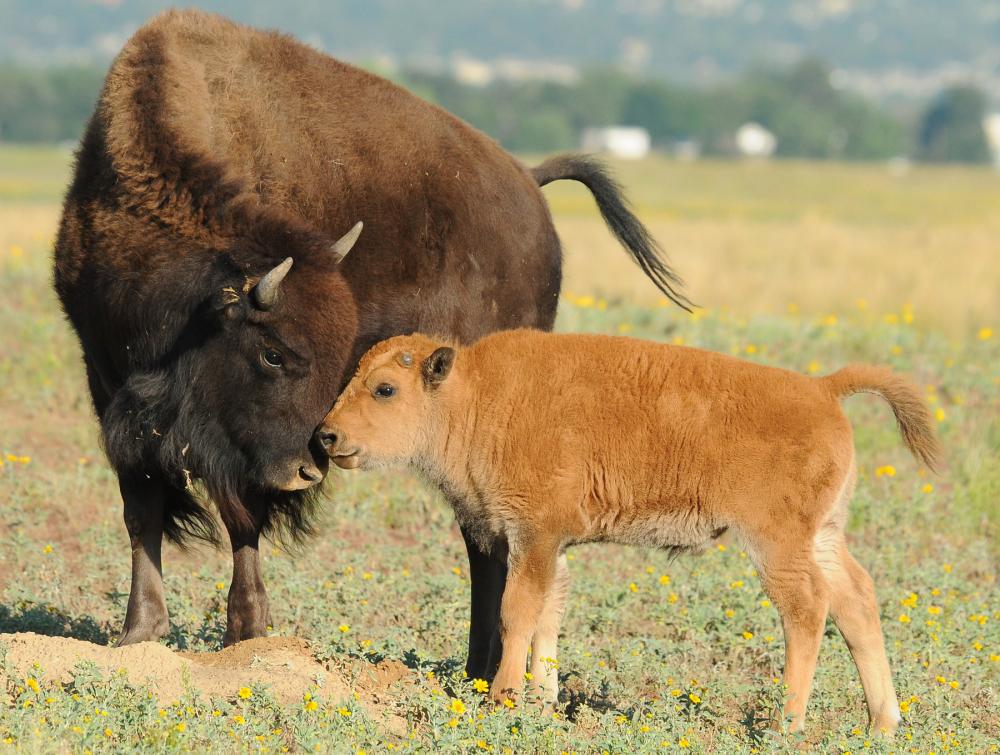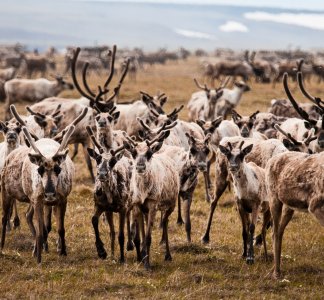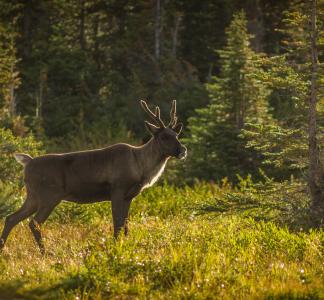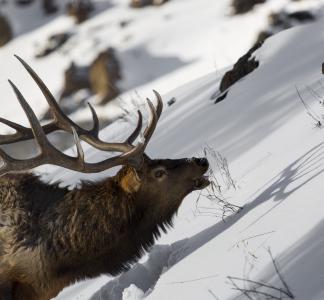Blooming flowers and bison calves: 7 signs of spring in wildlife refuges

Adult bison and calf at Rocky Mountain Arsenal National Wildlife Refuge, Colorado
Rich Keen, DPRA, USFWS, Flickr
Conservation and recreation importance on display
It’s hard not to feel a little optimistic when springtime rolls around. From wildflowers blooming to bees and butterflies stirring in search of nectar, the season abounds with signs of life perking up after a long, cold winter.
There are few better places to experience these harbingers of renewal than our network of national wildlife refuges. Numbering more than 560, these underappreciated spots preserve habitat for thousands of species (including many that are threatened or endangered) and are especially important as a way of curbing the ongoing nature-loss and extinction crisis.
Just as importantly, national wildlife refuges, many of which are near cities, provide critical open space for communities of color and low-income communities that may face social, economic and physical barriers (among many ways they make life better).
Here are some of the best signs of spring you can check out at national wildlife refuges around the country.
Seedskadee National Wildlife Refuge (Wyoming)
Situated along a 36-mile stretch of the Green River that makes it a key part of many bird species’ migration routes and nesting areas, Seedskadee is a renowned spot for wildlife-watching and photography (its name is derived from a Shoshone word meaning “river of the prairie hen”). If you’re very lucky, braving the chill of April or May might get you a peek at the dramatic courtship ritual of the greater sage-grouse. Just be sure to set an early alarm.
Ruby Lake National Wildlife Refuge (Nevada)
At Ruby Lake, a sprawling patch of Great Basin marshland that supports hundreds of species in northern Nevada’s high desert, one sure sign of spring is the seasonal return of greater sandhill cranes from their wintering grounds in Arizona. Here, the six-foot-wingspan birds pair up and claim nesting grounds, sustaining a small but stable population year after year. If you’re lucky enough to see cranes in person (not to mention other birds), be sure not to disturb their nesting habitat.
John Heinz National Wildlife Refuge (Pennsylvania)
As the first “urban refuge,” John Heinz is geared toward environmental education and connecting people with nature. As you might guess, one of the best ways to enjoy it is through wildlife-watching. To choose just a couple examples of what you might see and hear this time of year, each spring brings the chirping and warbling calls of frogs and toads and the muddy rumblings of snapping turtles preparing their nests (though hatchlings like this one don’t appear until fall).
Audubon National Wildlife Refuge (North Dakota)
Some consider Canada geese to be pests, but who can say no to their fuzzy little babies? Along with raptors and songbirds, this refuge named for the famous naturalist hosts the big black-and-white honkers (along with many other birds) each spring, with goslings generally emerging in May (give the geese a wide berth, and be wary of approaching baby birds generally).
Eastern Neck National Wildlife Refuge (Maryland)
Just off the eastern shore of the Chesapeake Bay, Eastern Neck has earned acclaim for its displays of flowering native plants, butterflies and bees, which take off in the spring and peak during summer. The refuge even has a model “BayScape” that demonstrates wildlife-friendly gardening with efficient water use and minimal pesticides, so feel free to try and capture the same experience back home.
Cape May National Wildlife Refuge (New Jersey)
An important stop on the Delaware Bay for shorebirds heading back north this time of year, Cape May is a great place to see red knots, piping plovers and sandpipers that refuel by eating the newly laid eggs of spawning horseshoe crabs.
Neal Smith National Wildlife Refuge (Iowa)
Each spring brings an explosion of life at Neal Smith, including blooming wildflowers and, beginning around April, the arrival of bison calves among the refuge’s carefully managed conservation herd. While the refuge is fundamentally intended for restoration and protection of native tallgrass prairie and oak savanna landscape and wildlife, it also has a major outdoor recreation and environmental education focus (but please, please, please stay away from bison).



